GOTHENBURG, Sweden — From the moment my dad bought me my first pair of cleats (he actually called them spikes, thanks to his running background … at least he didn’t call them boots) and shin guards, I have been bombarded with instructions and advice. Some things I’ve learned from coaches, videos and various experts have stuck with me over the years, and others I’ve chosen to throw by the wayside. In the spirit of my love of lists, here’s another!
 Photograph by Per MontiniThe writer playing for Gothenburg, which beat Malmo, 2-1, in a recent Swedish league game.
Photograph by Per MontiniThe writer playing for Gothenburg, which beat Malmo, 2-1, in a recent Swedish league game.Three things I learned as a youth player that I’ve decided to scrap as a professional:
¶ Warm up like you’re going to play the game. I’ve found that I prefer to expend less energy in warm-up and just make sure that my muscles are loose and my mind is free. I play best when my body is ready to go and I’m happy, so usually, in terms of a pregame routine, this means less is more. I like when a team warms up with possession or some sort of actual playing, but I am not going to go all out and try to feel the intensity of the game just yet. That may work for some people, but it’s not how I prepare.
¶ Decide what you’re going to do with the ball before it comes to you. Yes, it’s good to have your head up and have a picture of the field in your mind as the ball travels to you, but I find it’s best not to make a decision until it’s at your feet. This might mean a split-second decision if you are going to play one-touch, but it’s not an early decision. I find that the later I make my decision, the more information I can process about what has changed on the field. Also, this makes the game less of a thinking game and more instinctive. I have a good feel for the rhythm of the game, so I like to rely on that instinct as opposed to my mind doing the work.
¶ Avoid caffeine before the game. I like to have a coffee, or two, before I play. I hydrate well and try to get plenty of sleep, but I feel that some caffeine gives me an extra edge in terms of energy and focus when it comes time to play. Coffee has a large effect on my mood. Plain and simple, it makes me happy. And who doesn’t want to feel happy before playing?
Three things I learned as a youth player that I always want to hold onto:
¶ The most important thing is to have fun. Hands down, this is my one key to success. I play much better when I’m relaxed and enjoying myself, and I enjoy myself when things are going well on the field. They feed off each other, but the one thing I can control within the cycle is to find happiness in the little things. Whether it’s something funny that happens on the field, a good combination with a teammate, or the simplest pass that zips along the grass, I try to appreciate those moments. I don’t think I’ve ever played poorly in a game when I was in a good frame of mind and enjoying myself.
 Photograph by Gloria AverbuchIn Montclair, N.J., 8 years old or thereabouts.
Photograph by Gloria AverbuchIn Montclair, N.J., 8 years old or thereabouts.¶ Have orange slices at halftime. I sweat a lot and find that I not only need to drink a lot of fluids, but also have a snack at halftime. Fruit, gummy bears, a granola bar all work. The little bit of sugar helps to replace some of what I’ve lost in the first half, and also keeps me focused and energized. I would love it if there were always orange slices available, but unfortunately that ended at about age 12.
¶ Don’t be afraid to make mistakes.Especially as a center midfielder, it’s easy to get down on yourself if you make a few mistakes. It can be scary to demand the ball when you’ve just given it away in a dangerous area. But since I find that being in that position puts you constantly in the middle of the action, I’ve started to view mistakes differently. My philosophy is to do more, and do it well, so mistakes matter less. Rather than attempting to limit mistakes, which sometimes I can’t control and trying can make me tense, I demand the ball as much as possible and always be available as an outlet. That way, if I am constantly involved and do tons of good things, the times I don’t do as well are far less important.
I’ve long outgrown that first pair of cleats and now prefer shin guards without the attached ankle guards. It’ll be interesting to look back some years from now and see what advice I’ve continued to covet and what new take I have on the pieces that I will chuck along the way.

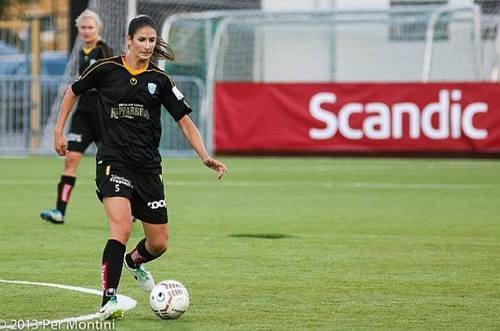
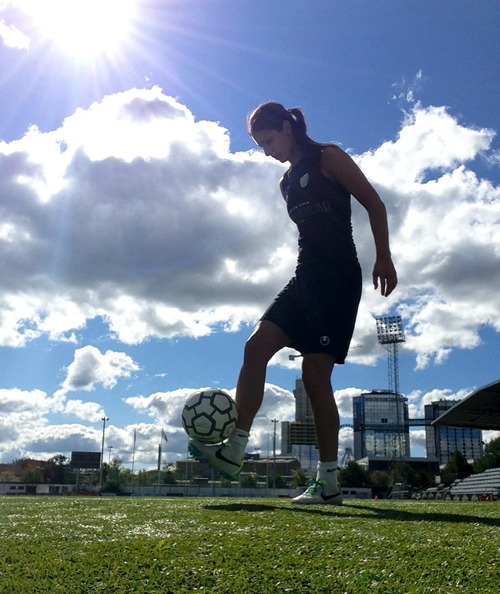


 The club bought purple bikes for the author and a teammate.
The club bought purple bikes for the author and a teammate.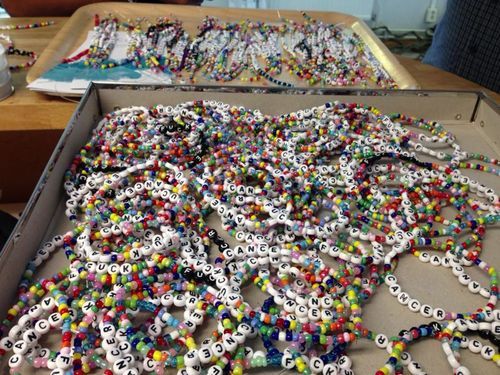
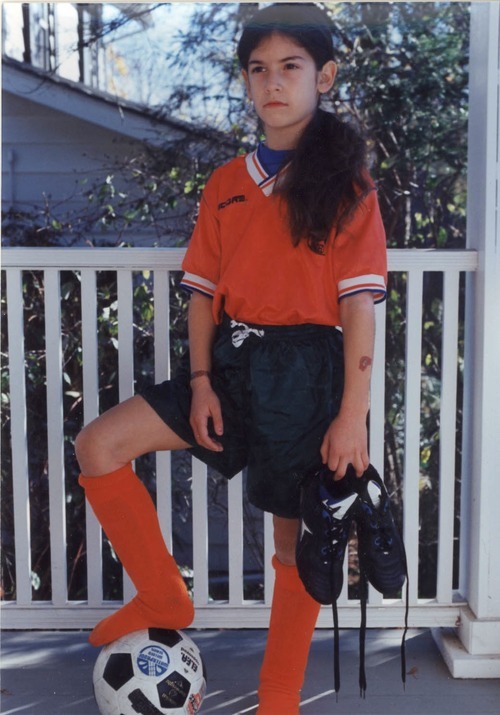
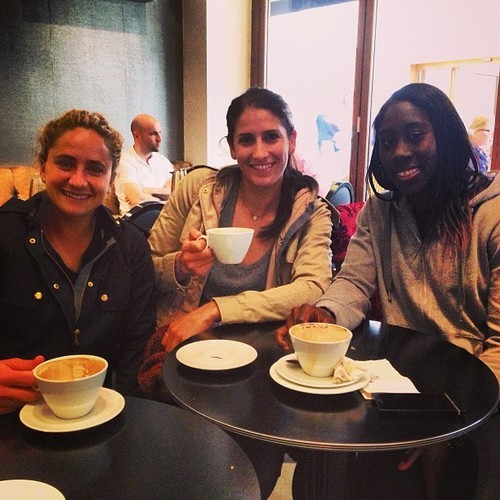

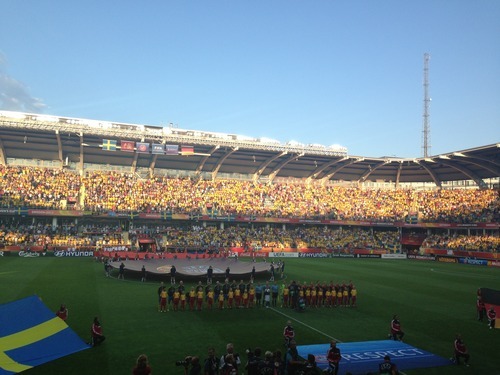

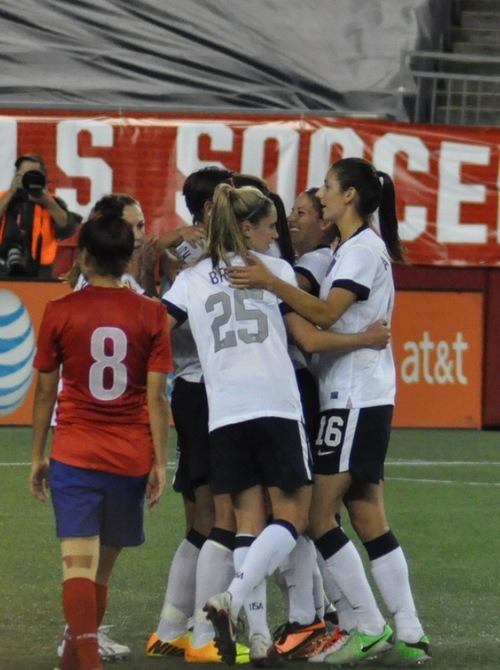 In the locker room we joked about Abby Wambach’s boots—a pair of flashy yellow NIKE Vapors. Tobin Heath even tried them on, looking ridiculous with the combination of the bright color and Abby’s much-bigger shoe size. Little did we know that those boots were about to make history by breaking Mia Hamm’s all-time international goal-scoring record. #ChasingMia became #ChasingAbby within 45 minutes of magical action in front of nearly 20,000 fans at Red Bull Arena.
In the locker room we joked about Abby Wambach’s boots—a pair of flashy yellow NIKE Vapors. Tobin Heath even tried them on, looking ridiculous with the combination of the bright color and Abby’s much-bigger shoe size. Little did we know that those boots were about to make history by breaking Mia Hamm’s all-time international goal-scoring record. #ChasingMia became #ChasingAbby within 45 minutes of magical action in front of nearly 20,000 fans at Red Bull Arena.
 “And after a time you may recognize that the proper measure of success is not how much you’ve closed the distance to some far-off goal but the quality of what you’ve done today.” — U.S. Supreme Court Justice Sonia Sotomayor
“And after a time you may recognize that the proper measure of success is not how much you’ve closed the distance to some far-off goal but the quality of what you’ve done today.” — U.S. Supreme Court Justice Sonia Sotomayor Photographs by Yael Averbuch
Photographs by Yael Averbuch


 As I lounged on the couch, all I could think was: If I don’t do my hamstring exercises, they will be sosore when I start back up. And my quads … they’re going to kill me after I do a shooting session.
As I lounged on the couch, all I could think was: If I don’t do my hamstring exercises, they will be sosore when I start back up. And my quads … they’re going to kill me after I do a shooting session.







 DEN HAAG, the Netherlands — The alarm always seems to go off much too early the morning after a game.
DEN HAAG, the Netherlands — The alarm always seems to go off much too early the morning after a game. F.C. RossiyankaGoalkeeper Elvira Todua, right, during Rossiyanka’s second-leg loss to Potsdam in the UEFA Women’s Champions League in Moscow on March 20.
F.C. RossiyankaGoalkeeper Elvira Todua, right, during Rossiyanka’s second-leg loss to Potsdam in the UEFA Women’s Champions League in Moscow on March 20.




 Many of us who were invested in Women’s Professional Soccer rejoiced when the National Women’s Soccer League was announced.
Many of us who were invested in Women’s Professional Soccer rejoiced when the National Women’s Soccer League was announced.